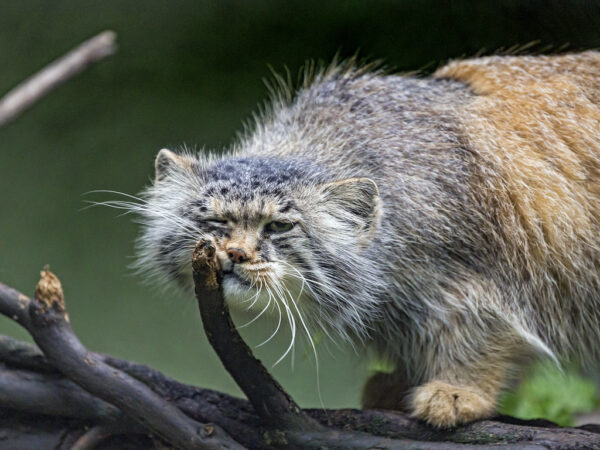What is a Pallas’s Cat?
Pallas’s Cat, also known as Otocolobus manual or Manul, is a small wildcat species that belongs to the Felidae family. It’s known for its round face, stocky body, and long, dense fur that helps it survive the cold climate of its native range.
Physical Traits
Pallas’s Cat has a stocky build, a flat, broad face, and small eyes. Its ears are short and rounded, positioned low on the sides of the head. The fur is light gray to reddish-brown with dark spots and rings on the tail and legs and double the length on the underbelly. This thick, woolly underfur serves as insulation against harsh winter temperatures.
Habitat
Pallas’s Cat has a wide range across Central Asia, from Iran to Mongolia. They live in rocky, dry, scrubby areas, avoiding grassy plains and forests. Pallas’s Cats prefer abandoned marmot burrows or rock cavities for shelter during the daytime and hunting during the night.
Diet
Pallas’s Cat is a carnivore and feeds mainly on small rodents such as pikas and gerbils. They could also eat rabbits, birds, and reptiles.
Reproduction
Female Pallas Cats give birth to litters of two to six kittens after a gestation period of around 70 days. The young will start hunting with their mother after two months and reach maturity between one and two years old.
Conservation Status
Pallas’s Cat is listed as Near Threatened on the IUCN Red List. Due to habitat loss, hunting for fur, and unregulated accidental killings, their population is declining.
Interesting Facts
- According to Mongolian folklore, Pallas’s Cat protects the nomads’ horses from predators.
- Pallas’s Cat has a peculiar vocalization, with a distinctive high-pitched meowing.
- They are immune to snake venom, thanks to the thick fur on their head, which protects them during hunting.
- Pallas’s Cat became famous in 2013 after a BBC documentary called “The Cat That Hunts By Sound” showed their unique hunting techniques.
Pallas’s Cat is an exciting and unique wildcat species with distinct adaptations to its harsh environment. With conservation efforts, protecting them and ensuring their survival in the wild for future generations is possible.
Sources:

